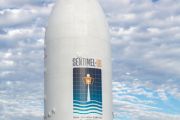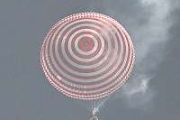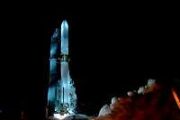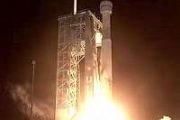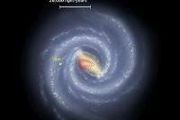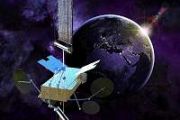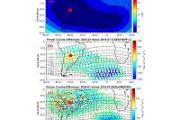
Copernical Team
Ovzon 3 Satellite Launched Aboard SpaceX's Veteran Falcon 9 to Geosynchronous Orbit
 In a landmark event for space exploration and communications technology, SpaceX has successfully launched the Ovzon 3 mission to geosynchronous transfer orbit. The launch, conducted from Space Launch Complex 40 (SLC-40) at Cape Canaveral Space Force Station in Florida, took place on Wednesday, January 3, with a precisely timed 10-minute launch window that opened at 6:04 p.m. ET. A backup opportu
In a landmark event for space exploration and communications technology, SpaceX has successfully launched the Ovzon 3 mission to geosynchronous transfer orbit. The launch, conducted from Space Launch Complex 40 (SLC-40) at Cape Canaveral Space Force Station in Florida, took place on Wednesday, January 3, with a precisely timed 10-minute launch window that opened at 6:04 p.m. ET. A backup opportu FAST All Sky HI Survey Achieves Major Milestone in Extragalactic Astronomy
 The field of extragalactic astronomy has witnessed a significant advancement with the FAST All Sky HI survey (FASHI), a project designed to utilize the unique capabilities of the Five-hundred-meter Aperture Spherical radio Telescope (FAST). This ambitious survey, spanning an impressive 22000 square degrees of the sky, aims to revolutionize our understanding of the universe's HI content and its l
The field of extragalactic astronomy has witnessed a significant advancement with the FAST All Sky HI survey (FASHI), a project designed to utilize the unique capabilities of the Five-hundred-meter Aperture Spherical radio Telescope (FAST). This ambitious survey, spanning an impressive 22000 square degrees of the sky, aims to revolutionize our understanding of the universe's HI content and its l Astrobotic Readies for Historic Lunar Mission with Ansys Technology
 In a significant advancement for lunar exploration, Astrobotic is set to embark on one of the first Commercial Lunar Payload Services (CLPS) deliveries to the Moon, utilizing Ansys' (NASDAQ: ANSS) sophisticated simulation solutions. The Peregrine lunar lander, scheduled for a January launch and February landing, will transport 20 payloads from seven countries, aiding NASA's Artemis program in pr
In a significant advancement for lunar exploration, Astrobotic is set to embark on one of the first Commercial Lunar Payload Services (CLPS) deliveries to the Moon, utilizing Ansys' (NASDAQ: ANSS) sophisticated simulation solutions. The Peregrine lunar lander, scheduled for a January launch and February landing, will transport 20 payloads from seven countries, aiding NASA's Artemis program in pr First Batch of Starlink Satellites for Direct-to-Cell Service Launched by SpaceX
 In a significant leap for mobile connectivity, SpaceX's Falcon 9 rocket has successfully launched the first set of Starlink satellites equipped with Direct to Cell capabilities, as reported by T-Mobile. This launch, part of the livestreamed event last night, marks a pivotal step in the Coverage Above and Beyond initiative, a joint venture between T-Mobile and SpaceX. This ambitious project aims
In a significant leap for mobile connectivity, SpaceX's Falcon 9 rocket has successfully launched the first set of Starlink satellites equipped with Direct to Cell capabilities, as reported by T-Mobile. This launch, part of the livestreamed event last night, marks a pivotal step in the Coverage Above and Beyond initiative, a joint venture between T-Mobile and SpaceX. This ambitious project aims Sols 4056-4058 Blog: "Ringing" in a New Year
 Earth planning date: Tuesday, January 2, 2024: Curiosity was busy over the holiday break, working independently through 11 pre-planned sols. As Earth transitioned into a new year, dawn broke once again on Mars, and Curiosity awaited a call in the form of a fresh set of instructions. The return to planning for Curiosity's science team today was not immune to plot twists and suspense.
While
Earth planning date: Tuesday, January 2, 2024: Curiosity was busy over the holiday break, working independently through 11 pre-planned sols. As Earth transitioned into a new year, dawn broke once again on Mars, and Curiosity awaited a call in the form of a fresh set of instructions. The return to planning for Curiosity's science team today was not immune to plot twists and suspense.
While Privatised Moon landings: A new era of commercial lunar exploration
 Two commercial spacecraft are scheduled to launch to the Moon early in 2024 under a Nasa initiative called the Commercial Lunar Payload Service CLPS. This programme is intended to kickstart a commercial transportation service that can deliver Nasa experiments and other payloads to the lunar surface.
If successful, these missions will represent the first landings on the Moon by spacecraft d
Two commercial spacecraft are scheduled to launch to the Moon early in 2024 under a Nasa initiative called the Commercial Lunar Payload Service CLPS. This programme is intended to kickstart a commercial transportation service that can deliver Nasa experiments and other payloads to the lunar surface.
If successful, these missions will represent the first landings on the Moon by spacecraft d 30 Doradus B: NASA Telescopes Start the Year With a Double Bang
 A colorful, festive image shows different types of light containing the remains of not one, but at least two, exploded stars. This supernova remnant is known as 30 Doradus B (30 Dor B for short) and is part of a larger region of space where stars have been continuously forming for the past 8 to 10 million years. It is a complex landscape of dark clouds of gas, young stars, high-energy shocks, an
A colorful, festive image shows different types of light containing the remains of not one, but at least two, exploded stars. This supernova remnant is known as 30 Doradus B (30 Dor B for short) and is part of a larger region of space where stars have been continuously forming for the past 8 to 10 million years. It is a complex landscape of dark clouds of gas, young stars, high-energy shocks, an Mapping the Unseen: How AI and Satellite Technology Reveal Offshore Activities
 Humans are racing to harness the ocean's vast potential to power global economic growth. Worldwide, ocean-based industries such as fishing, shipping and energy production generate at least US$1.5 trillion in economic activity each year and support 31 million jobs. This value has been increasing exponentially over the past 50 years and is expected to double by 2030.
Transparency in monitori
Humans are racing to harness the ocean's vast potential to power global economic growth. Worldwide, ocean-based industries such as fishing, shipping and energy production generate at least US$1.5 trillion in economic activity each year and support 31 million jobs. This value has been increasing exponentially over the past 50 years and is expected to double by 2030.
Transparency in monitori Hubble observes a changing exoplanet atmosphere

An international team of astronomers has assembled and reprocessed observations of the exoplanet WASP-121 b that were collected with the NASA/ESA Hubble Space Telescope in the years 2016, 2018 and 2019. This provided them with a unique dataset that allowed them not only to analyse the atmosphere of WASP-121 b, but also to compare the state of the exoplanet’s atmosphere across several years.
The team found clear evidence that the observations of WASP-121 b were varying in time. Using sophisticated modelling techniques, they demonstrated that these temporal variations could be explained by weather patterns in the exoplanet's atmosphere.
Huginn - leading the Space Station
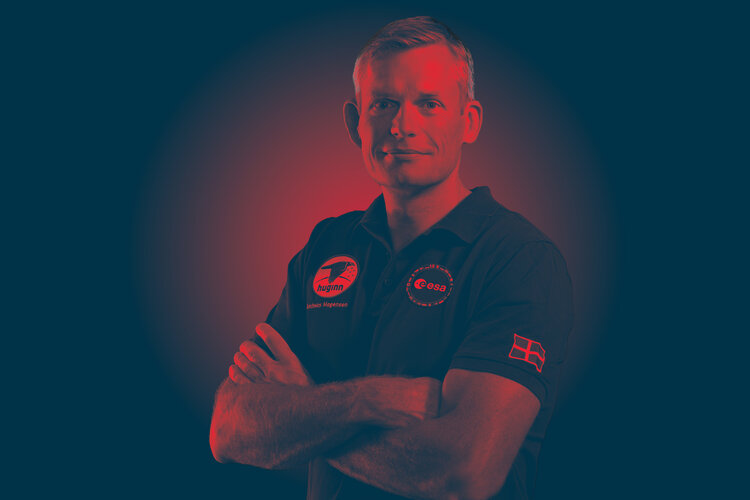
Huginn - leading the Space Station
Huginn



